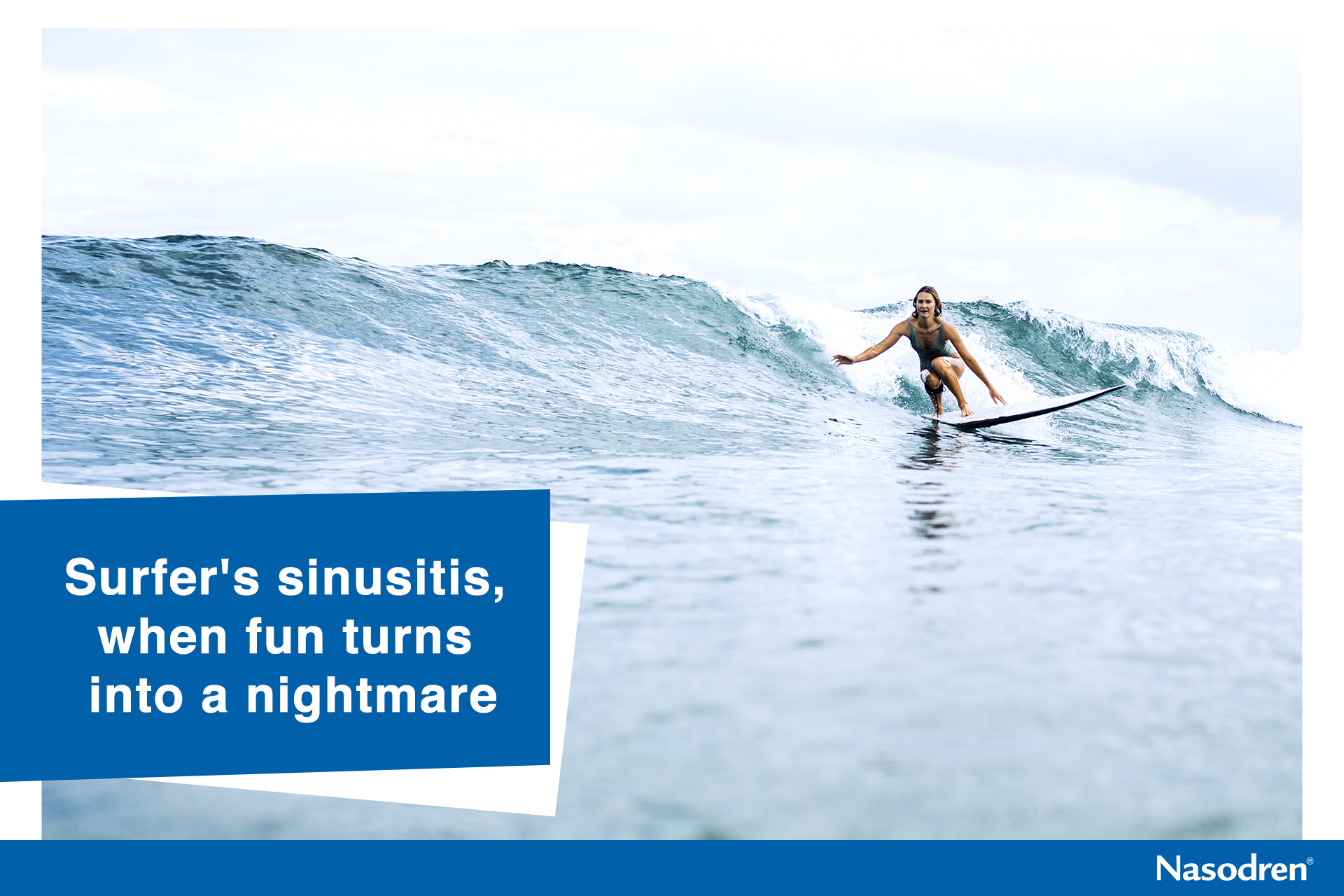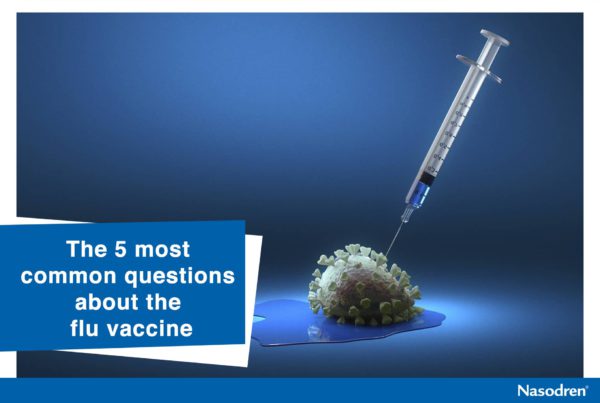Surfing has millions of fans all over the world who are madly in love with riding waves. This is a cool sport that puts people face to face against nature, and that’s why it has some risks involved. When considering the downsides of surfing, we tend to think about the most common dangers: the power of a rough sea, accidents that may occur when falling off the surfboard and, to a lesser degree, other potential sea threats, such as being attacked by some creatures (shark bites aren’t common, but they can’t be left out of the equation!).
However, there are less evident hazards related to this practice that can’t be ignored under any circumstance. We are referring to health conditions and, in particular, to what is kwown as ‘surfer’s sinusitis‘. What’s behind such a name? Well, it is no more than a sinusitis (the infection or inflammation of the paranasal sinuses due to different infectious agents) affecting those who surf on a regular basis, but let’s spell it out.
Sinusitis per se is caused by viruses, bacteria, allergies, fungi and congenital or non-congenital abnormalities of the nasal cavity. As the ocean is filled with bugs, it comes as no surprise that surfers become a soft target for bacteria, which can cause them a lot of trouble. Symptoms can range from the common ones, like nasal blockage, post-nasal drip and facial pain, to more severe and unusual ones, including vision problems and infections spreading to the brain.
Surf hall of famer Timmy Turner can widely talk about it after his terrible experience, back in 2005. The Californian surfer almost lost his life owing to a staph infection that started affecting his sinuses and ears, but eventually hit his brain area, devouring part of his skull in the process. As a result, Turner fell into a coma, needed up to six brain surgeries and went through a long rehab process through which, among other things, he had to re-learn how to walk. That’s how bad it was.
According to different sources, it’s very likely that Timmy Turner got infected while surfing in the Huntington Beach Pier (Orange County, California) after a storm, which would actually make sense. Indeed, experts don’t recommend swimming in the sea after big rainstorms, as the level of bacteria in the water can dramatically increase, especially when the sewage floods and flows into the sea. But, of course, this goes against the spirit of many surfers, who often take advantage of bad weather to look for big challenges in the water.
However, if you are a surfer, you might as well take some precautions to prevent conditions such as sinusitis. Here are some tips to help you out on that mission:
– If you have an open wound, take a break and stay away from the water. Wounds serve as gateways for bacteria to enter our bodies.
– Try wearing ear and nose plugs to stop water from getting into your body.
– Check the sea state before grabbing your surfboard. If the water quality isn’t good enough (too mucky), you should consider surfing somewhere else.
– Be sure to clear and drain the mucus from your nasal and paranasal areas after your surfing time. This is the best way to prevent mucus from building up in your sinuses and get infected, which is what accounts for most of the sinus symptoms, such as facial pain and headaches. Contact us for more information on how to do that!
In other words, you ‘beach boys and girls’ keep having fun, but play it safe and smart!
Nasodren is 100% natural, with no rebound efect
Effectively reduces nasal congestion
Buy now HERE








